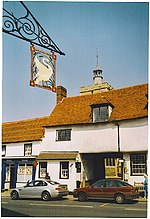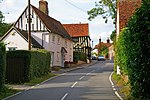Felsted railway station
1869 establishments in EnglandDisused railway stations in EssexEast of England railway station stubsFormer Great Eastern Railway stationsPages with no open date in Infobox station ... and 3 more
Railway stations in Great Britain closed in 1964Railway stations in Great Britain opened in 1869Use British English from December 2016

Felsted railway station was located in Essex between Felsted and Little Dunmow. The station was 11 miles 61 chains (18.93 km) from Bishop's Stortford on the Bishop's Stortford to Braintree branch line (Engineer's Line Reference BSB). The station closed to regular passenger traffic in 1952. The station building still exists as a private house.
Excerpt from the Wikipedia article Felsted railway station (License: CC BY-SA 3.0, Authors, Images).Felsted railway station
Travellers' Site, Uttlesford Little Dunmow
Geographical coordinates (GPS) Address External links Nearby Places Show on map
Geographical coordinates (GPS)
| Latitude | Longitude |
|---|---|
| N 51.8648 ° | E 0.4162 ° |
Address
Felsted
Travellers' Site
CM6 3HH Uttlesford, Little Dunmow
England, United Kingdom
Open on Google Maps









